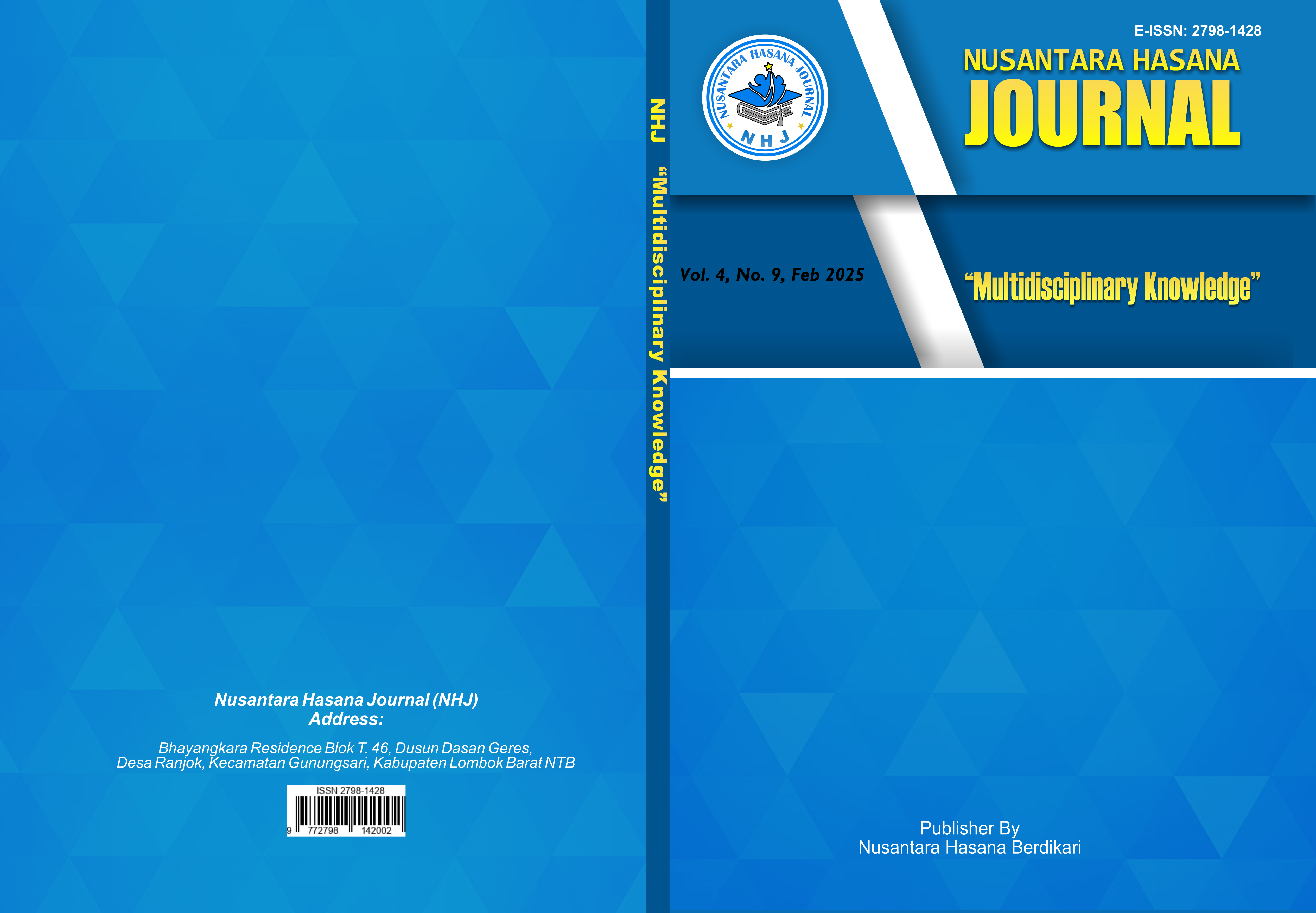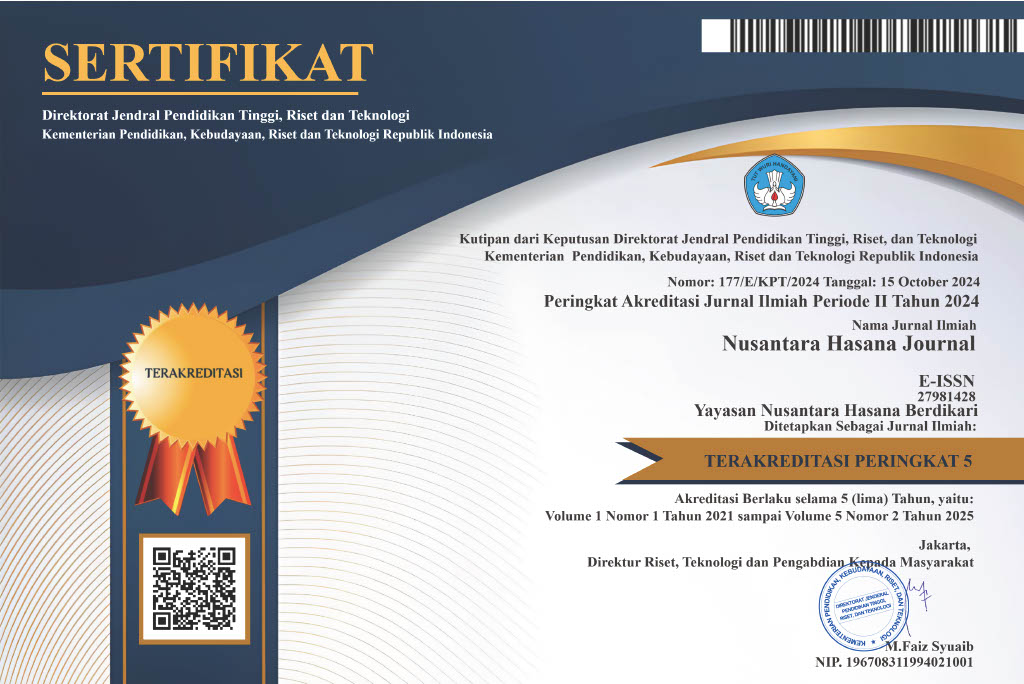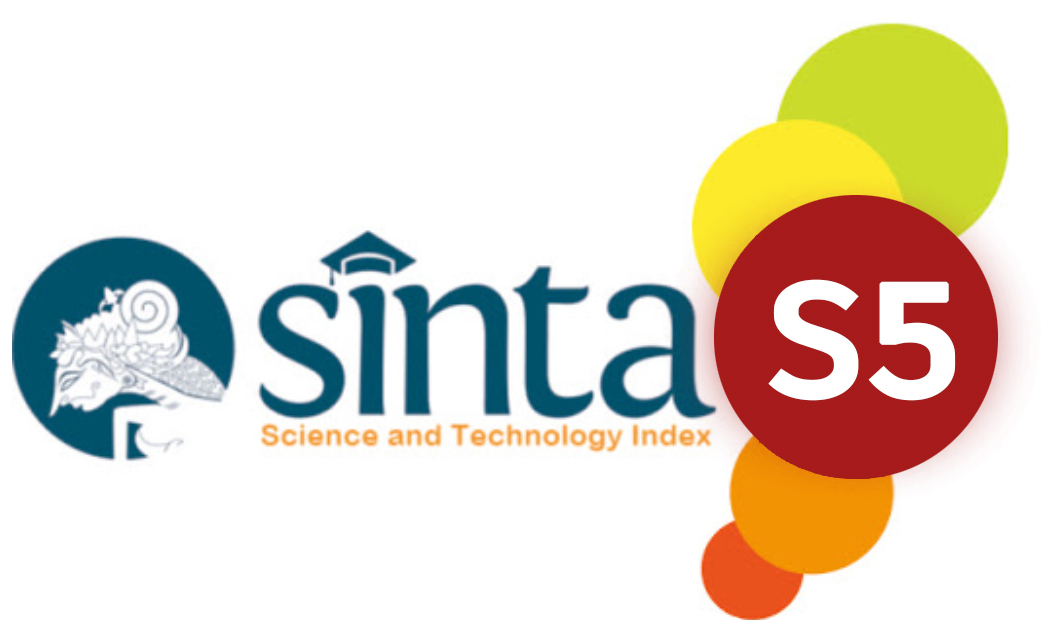PENETAPAN KADAR KAFEIN DAUN Camellia sinensis SECARA EKSTRAKSI PELARUT
DOI:
https://doi.org/10.59003/nhj.v4i9.1330Keywords:
Camellia sinensis, Caffeine, SoxhletationAbstract
Tea is a medicinal plant with many benefits. These include as an anticancer, antioxidant, antimicrobial, antibacterial, and prevention of osteorosclerosis. The Camellia sinensis plant produces tea from its leaves and shoots. Caffeine is one of the ingredients in tea plants. The purpose of this study was to determine the caffeine content of Camellia sinensis. The research method uses ether for the sample socletation process, then heated. Furthermore, methyl red indicator to identify caffeine then titrated with 0.2 N NaOH and weighed the caffeine content % (b/b). The results obtained from the socletation process of 10 grams of Camellia sinensis leaves are 400 mL. The addition of methyl red indicator produced a pink color change indicating that the sample was positive for caffeine. Determination of caffeine content using the titration method with NaOH 0.2 N solution as much as 71 mL produces a clear color change. In the calculation of the percent of caffeine content is 2.27%. The conclusion from the data is that there is caffeine content in green tea in accordance with the requirements for the value of content in tea leaves 0.5%-4%, so that the results of the study show that it is in accordance with the literature and the Indonesian herbal pharmacopoeia.
Downloads
References
Anam, C, Agustini, T. W., Dan Romadhon. (2014). Pengaruh Pelarut Yang Berbeda Pada Ekstraksi Spirulina Platensis Serbuk Sebagai Antioksidan Dengan Metode Soxhletasi. Jurnal Pengolahan dan Bioteknologi Hasil Perikanan. Vol. 3 (4): 106-112.
Anggarani, M,A, Ilmiah, M, Mahfudhah, D,N. (2023). Literature Review of Antioxidant Activity of Several Types of Onions and Its Potensial as Health Supplements. Indonesian Journal of Chemical Science. Vol. 12 (1): 103-111.
Choiril, H, M, Anita, A, & Meivi, P. (2022). Analisis Kandungan Kafein Pada Makanan Cokelat Batangan Yang Beredar Di Swalayan X Kota Klaten. CERATA Jurnal Ilmu Farmasi. Vol. 13 (1): 25-29.
Hardiyanti, A,S, Sulistiyono, I,R, Widiyaningsih, A, Sukardiman, Widyowati, R. (2024). Studi Etnomedisin Tanaman Obat sebagai Penurun Rasa Nyeri Sendi pada Suku Dayak. MPI (Media Pharmaceutica Indonesiana). Vol. 6 (1): 63-72.
Khopkar, S, M. (1990). Konsep Dasar Kimia Analitik. UI Press. Jakarta.
Meirina. (2018). Pengaruh berbagai jenis teh terhadap kualitas teh kombucha. Universitas Islam Negeri Raden Intan, Lampung.
Melwita. (2014). Analisis Kadar Lemale Dengan Metode Soxhlet. Indonesian Journal Of Laboratory, Vol. 1 (2): 29-35.
Putri, D.D & Ulfin, I. (2015). Pengaruh Suhu Dan Waktu Ekstraksi Terhadap Kadar Kafein Dalam Teh Hitam. Jurnal Sains dan Seni ITS. Vol. 4(2): 105-108.
Suhendra. (2020). Perbandingan Metode Elestraksi Maserasi Dan Soxhletasit Terhadap Kandungan Senyawa Bioaktif. Indonesian Journal Of Pharmacy And Natural Product, Vol. 5 (1): 1-10.
Sujayanto, G. (2008). Khasiat Teh untuk Kesehatan dan Kecantikan. Flona Serial. Institut Teknologi Bandung. Jakarta
Widayat, Dan Satriadi, H. 2005. Optimasi Pembuatan Dietil Eter Dengan Proses Reaktif Distilasi. Jurnal Reaktor, Vol.12 (21): 7-11.
Wahyuni, S. (2018). Skrinning Fitokimia, Kadar Total Etanol Dan Analisa Senyawa Dengan GC-MS (Gas Cromatografy- Mass Spektroskepy) Cendawan Endofit. Skripsi. Universitas Negeri Alauddin Makassar.
Downloads
Published
How to Cite
Issue
Section
License
Copyright (c) 2025 Andi Sry Hardiyanti

This work is licensed under a Creative Commons Attribution-NonCommercial-ShareAlike 4.0 International License.
NHJ is licensed under a Creative Commons Attribution-NonCommercial-ShareAlike 4.0 International License.
Articles in this journal are Open Access articles published under the Creative Commons CC BY-NC-SA License This license permits use, distribution and reproduction in any medium for non-commercial purposes only, provided the original work and source is properly cited.
Any derivative of the original must be distributed under the same license as the original.
























